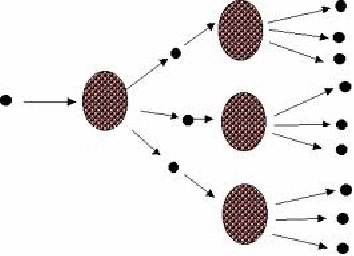The fuel in a nuclear power station is not burned – instead energy is released via the fission process. Each individual fission reaction involves the splitting of a uranium nucleus for example into smaller fragments along with several neutrons. These neutrons may go on to cause other uranium nuclei to undergo fission too, causing a chain reaction.

A nuclear reactor is uses control rods to absorb surplus neutrons so that on average only one neutron from each fission reaction goes on to cause a further fission reaction. In this way the reaction does not run out of control and energy is produced at a steady rate.
The probability of a given neutron causing a further fission reaction depends on several factors. The most important are:
-
The number of potential fissionable nuclei present
-
The speed of the neutrons
As a general trend, as the size of a piece of uranium increases so does the probability of a neutron causing further fission reactions before it escapes the uranium. If the size of the piece is increased, there comes a point at which a self sustaining reaction can occur. The size of the piece needed depends on the fuel and the shape of that piece of fuel..
Neutrons of certain speeds or energies make fission of uranium more likely. In general the neutrons produced during fission are moving faster than these speeds, and a 'moderator' is used to slow them to the desired speed so that they are more likely to cause further fission reactions.
